
© Railway Wonders of the World 2012-


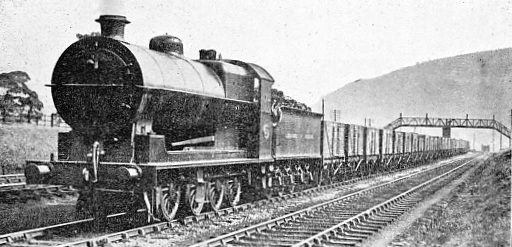
HEAVY YORKSHIRE COAL TRAIN ON THE LMS RAILWAY
THERE are various kinds of goods trains. The wayside goods stops at every little station in order to pick up and drop its wagons, and takes many hours over its journeys; on the other hand the “express freight” trains, which mostly run in the night, are in these days often timed at speeds but little short of the express passenger speeds to which the passenger is accustomed. This applies especially to fish, and other “perishable” traffic, which has to be carried in wagons fitted with the same “continuous” brake as the passenger coaches, so that the driver may be able to pull his train up readily. Otherwise, such high speed would be dangerous.
In the ordinary goods train, although each truck has its handbrake, such brakes can only be used in shunting, as there is no means of getting at them when the train is in motion. So the only brake-
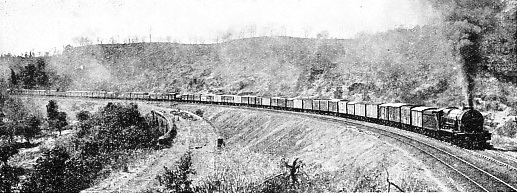
1250-
Americans sometimes laugh at our “toy” wagons; as they call them, but it has been proved by experience that, for the small consignments and short “hauls” of this country, the four-
The Great Western Railway, for example, has introduced the all-

THE OLD AND THE NEW ON THE GREAT WESTERN RAILWAY
All the freight wagons used in America are carried on eight wheels, and capacities of 50 and 60 tons are common. Similar wagons are coming into use in India, as you can see in the picture below. On certain American lines carrying a heavy coal traffic for shipment, wagons up to even 100 and as much as 120 tons capacity, carried on 12 wheels, have been built. “Bogie” goods wagons have also been built in this country, and familiar examples are the 50-
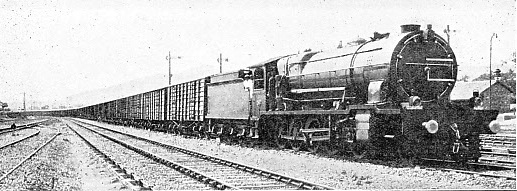
A 2000-
The photograph below shows how goods trains are “sorted” in the big marshalling yards, according to the destinations of their wagons.

ONE OF THE “HUMPS” IN FELTHAM YARD
Each train is pushed slowly over the “hump” in the track, which can be seen in the distance; at the top of the hump the wagons are uncoupled one by one, and roll quickly down a short gradient to the beginning of the “gridiron” of sidings, where each wagon is deftly turned by the hand-
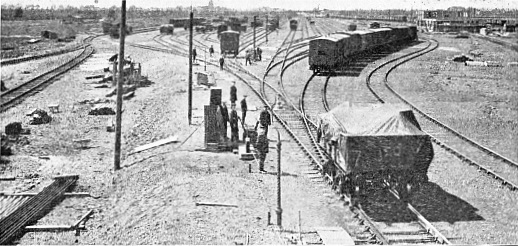
WAGONS RUNNING OFF A “HUMP” AT FELTHAM
Every siding represents a different destination, or collection of destinations, and by this method of sorting the trains, much time and labour in shunting is saved.

THE GREAT SOUTHERN RAILWAY SORTING SIDINGS AT FELTHAM
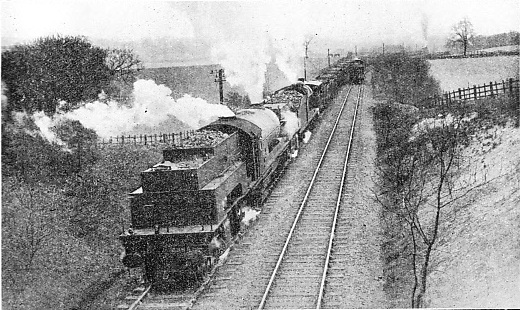
“BANKING” A HEAVY COAL TRAIN UP A 1 IN 40 GRADIENT ON THE LNER. The rear engine is of the “Garratt” double-
You can read more on “The Railway Takes All”, “The Railways’ Daily Work”, and “Sorting Goods Wagons” on this website.